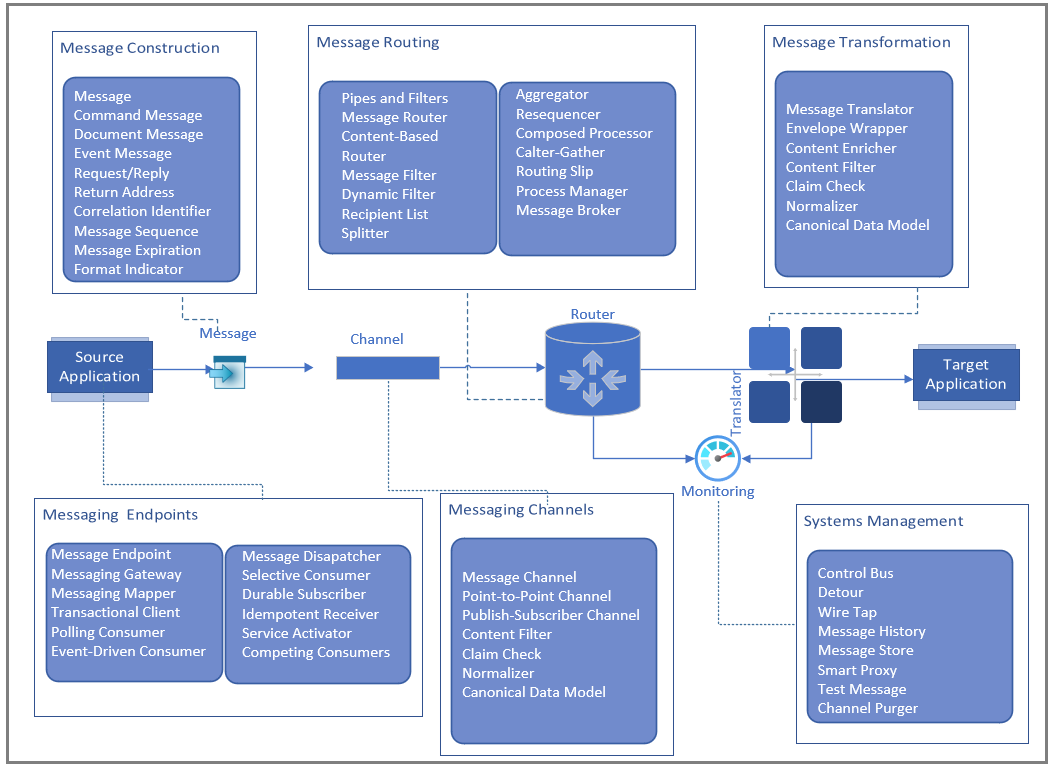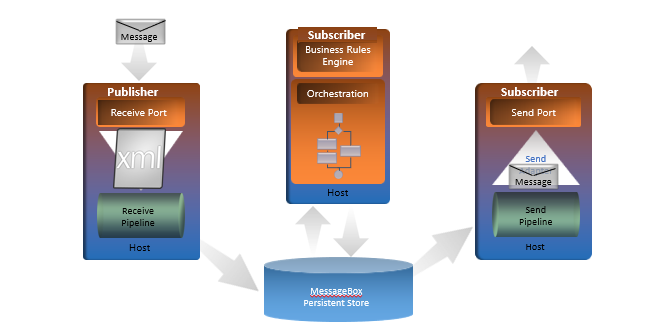
Enterprise Application Integration (EAI) is the platform to share data across applications. The source application has the data in one format in another hand, the target application requires the data in another format. It is complex in day-to-day operations to convert the messages to different formats in larger enterprises. In the earlier days, the manual work of copying data across the applications leads to data inconsistency and time consumption.
This challenge evolves into EAI which helps disparate systems to communicate better to avoid the integration challenges.
It can streamline the business process of transforming messages from multiple sources.
Enterprise Integration provides solutions for the smooth functioning of on-premises and cloud services. In the current Integration scenarios, most of the leading players are in cloud-based solutions.
Microsoft BizTalk Server is an on-premises tool that integrates multiple applications in the BizTalk environment. Starting from BizTalk Server 2016 supports the Azure integration (Hybrid).
The Integration solutions must address the core challenges in the application integration space.
The Patterns are determined based on the solution achieved with the message processing scenarios. Integration patterns are classified into different forms based on behaviors of message processing.

An enterprise has several applications and communication is established through a Message Channel that connects them.
Transformation of the message is intended to send a command specifying a function or method on the receiver (Subscriber) that the sender (Publisher) wishes to invoke the message.
An application must invoke the message transform using the command.

Messaging is asynchronous, it is being invoked by a procedure. It could be a local procedure call into a message.
Use a Document Message to reliably transfer a data structure between the applications. Whereas a Command Message tells the receiver to invoke certain behavior. The Document Message just passes data and lets the receiver decide what, if anything, to do with the data. The data is a single unit of data, a single object or data structure that may decompose into smaller units.
The event message is used for messaging with event notifications.
In the Request-Reply pattern, Requestor can send a request message and wait for a reply message. Whereas the publisher receives the request and responds with a reply message.
The request message requires a return Address process the message cannot simply send the reply message on any channel. In this case, it must be reliable on the channel that the requestor excepts the reply on.
A Correlation Identifier is used to match the Request and Reply that indicates which request message this reply is for.
Message Sequence: A large set of data may need to be broken into message-size chunks and sent the data as a message sequence. It then marks each message with the sequence of identification fields.
Message Routing is used to decouple a message source from the destination of the message. The Message Router patterns can combine multiple routers to solve complex integration challenges. The categorization of the Routing patterns is as follows.
• The simple routers are variants of the Message Router and route messages from one inbound channel to one or more outbound channels.
• The composed routers combine multiple simple routers to create more complex message flows.
• The Architectural Patterns will describe the architectural styles based on Message Routers.
Message Transformation is a proven pattern to transform messages in different formats. The schemas vary from application to application. Mapping the schemas and transforming them to the targeted application’s expected entity. The format of the messages is transformed and can convert from non-standard format to XML.
Microsoft’s BizTalk Server is more than just an integration solution. It provides an end-to-end business process integration and management platform. This platform helps businesses to develop different kinds of solutions.
The BizTalk patterns which are involved in designing and building the necessary BizTalk artifacts, such as schemas, maps, pipelines, orchestrations, and adapters. Here is a general overview of the implementation steps for some of the commonly used BizTalk patterns:
The heart of the BizTalk Server is Message Box Queries, it processes the message from the publisher (Receive Port) and transforms it to subscribers (Orchestrations/Send Ports).

The Integration patterns can help to solve the various integration problems that enterprises would face. It can reduce the challenges when connecting disparate systems or applications. Here are some examples of how integration patterns can be used to solve specific integration problems:
A data transformation pattern is used to transform data from one format to another. It’s achieved with help of mapping tools such as the BizTalk Mapper or XSLT transformations.
For the large volume of data, a batch processing pattern can be used to process data in batches to improve the system’s scalability. This can help reduce the system load to prevent performance issues.
The applications which communicate using different protocols or transport mechanisms can use adapter patterns to provide a standard interface to connect the systems. This can be accomplished using pre-built adapters such as FTP, HTTP or SOAP adapters.
In complex integration, patterns such as the orchestrations pattern can be used to manage the workflow. Orchestrations can help to manage the flow of messages between systems and enforce business rules to ensure data consistency.
The Message Routing pattern is used to manage the complex message routing based on message content, integration patterns such as the content-based routing (CBR) pattern can be used to route the messages based on their content. CBR can help to route the messages to the right system based on the type of data.
The different messaging standards are used in message transformation patterns to transform messages from one standard to another. This can help to ensure that messages are compatible with the receiving system’s messaging standard.
These implementation steps may vary depending on the specific BizTalk pattern and the business requirements of the integration solution. Following best practices and guidelines for designing and building BizTalk artifacts is important to ensure the integration solution is scalable, maintainable, and reliable. Why not give BizTalk360 a try?
Happy Integration!